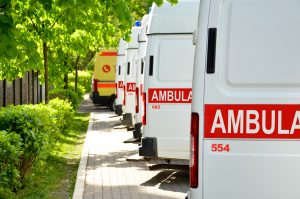Cold and flu season is in full swing with months to go before cases abate. In addition to the “tri-demic” viruses of COVID, influenza, and Respiratory Syncytial Virus (RSV), there’s news about strange pediatric pneumonias in China. And did I mention the common cold? The family medic should know about all these infections and why they happen.
First, what do we know about pneumonia in Chinese children? The World Health Organization (WHO) claims that the increased number of cases do not appear to be associated with some new disease-causing organism, but an entire grocery list of known microbes. These include “walking pneumonia” caused by a bacteria known as Mycobacteria pneumoniae. While most are generally not lethal, the sheer number of infected kids is straining the local medical infrastructure.
Of course, we’ve had undiagnosed cases of pneumonia from China in the recent past (COVID), so forgive me if I take WHO’s claims with a grain of salt; right now, however, we’re more concerned with the bugs that we know are affecting people on our continent.
I’ve written about each of the “tri-demic” diseases of influenza, RSV, and COVID many times, as well as many other viruses. Suffice it to say that anyone with viral respiratory illnesses will likely complain of:
- Sneezing and nasal congestion
- Sore throat
- Coughing
- Body aches and fatigue
- Fever
- Nausea and vomiting
- Diarrhea
These are treated as needed for the specific symptoms: Pseudoephedrine for runny nose and acetaminophen for fever, for example. The grand majority of healthy individuals will get better over time on their own.
The concern is not that we are dealing with lethal new viruses in the U.S. and Canada, but that known viruses are appearing earlier than expected and in greater numbers. This translates into a lot more hospitalizations. Why is this trend occurring? Why do infectious respiratory diseases recede and then come back with a vengeance? This winter, it’s something called the “immunity gap.”
WHAT IS THE IMMUNITY GAP?
Usually, there’s a predictable pattern to the outbreak of seasonal respiratory viruses. They usually ramp up in late fall or early winter and decrease in the spring and summer. But because of the restrictive measure taken to try to mitigate the COVID pandemic (masks, social distancing, school lockdowns, etc), cases of non-COVID infections were significantly decreased, especially influenza and RSV due to less exposure than normal.
The result is low levels of natural immunity, especially among infants and small children. Nursing mothers were not exposed to normal exposure to things like the flu, so didn’t pass along enough antibodies in breast milk.
Now that COVID measures are a thing of the past, viruses like the flu and RSV are circulating in mass quantities and infecting vulnerable infants and small children. As infectious diseases, they are spreading in earnest and are seen in higher numbers than before.
The immunity gap is especially noticeable with RSV. Nearly all children get this infection by the age of two. In normal times, these babies spread it to others and the virus continually circulates, with the infected individuals producing antibodies against it. This results in a population with good levels of immunity. Most children born since early 2020, however, have not been exposed to RSV. This large group is now becoming infected and spreading it to others. Will newly resurgent viruses like RSV be more deadly than usual? We don’t know yet.
THE HYGIENE HYPOTHESIS
Part of the surge in viruses may also relate to something called “the hygiene hypothesis.” Supporters of this theory say that the overly sterile environments we created during COVID caused a lack of exposure to germs. Some even believe that extreme measures to protect children causes some of the food allergies, like peanuts, we see today. Maybe kids should get a little dirty once in a while?
RESPIRATORY HYGIENE
You can’t completely avoid catching a virus, but you can follow the rule of “respiratory hygiene” to reduce your exposure:
- Practice good hand hygiene; wash hands thoroughly and often during the day.
- Clean countertops, doorknobs, and other common-area items to reduce the viral load. A dilute bleach solution will work.
- Avoid social situations where someone is sick. Coughs and sneezes can reach others several feet away.
- Sick persons should cover their mouth and nose with tissues or other barrier when coughing or sneezing. Don’t have tissue? Sneeze or cough into your elbow or sleeve.
- Seriously ill individuals should be quarantined in an area away from high-traffic spots in the home. N95 masks, while not considered effective against COVID, can still provide some measure of protection.
Remember that staying indoors is not particularly protective against respiratory infections. The viral load in a closed and crowded room is probably much higher than the air outside!
Joe Alton MD
Hey, don’t forget to check out our entire line of quality medical kits and individual supplies at store.doomandbloom.net. Also, our Book Excellence Award-winning 700-page SURVIVAL MEDICINE HANDBOOK: THE ESSENTIAL GUIDE FOR WHEN HELP IS NOT ON THE WAY is now available in black and white on Amazon and in color and color spiral-bound versions at store.doomandbloom.net.
And don’t forget something entirely different, Dr. Bones and Nurse Amy’s Christmas bedtime story book “Snowbie, The First Snowman,” published by Sky Pony Press!



























